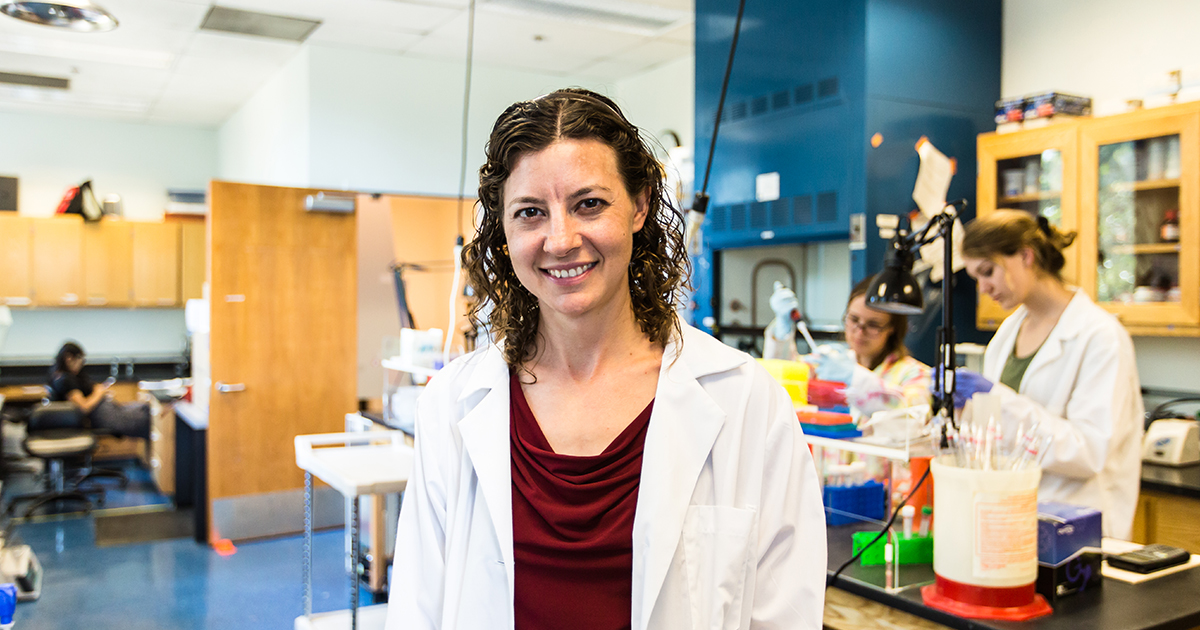Harvey Mudd Biologists Adapt DNA Localization Technique for Parasite Study
August 3, 2022
Researchers in biology professor Danae Schulz’s lab at Harvey Mudd College study how African trypanosomes adapt to living in different hosts: humans, hoofed animals and tsetse flies. In the American Society for Microbiology journal mShpere, the Schulz lab is the first to report using CUT&RUN (cleavage under targets and release using nuclease), a chromatin profiling strategy used to analyze DNA-protein interactions, on African trypanosomes.
“Adapting the technique to our parasite proved the most difficult part of this project,” says Schulz. “It was around three years of work just to get the process optimized. The CUT&RUN technique is quite a bit faster than other techniques that have been used in the past to map protein DNA interactions.”
African trypanosomes cause a fatal disease in humans and cows, and this imposes a severe human and economic burden in Sub-Saharan Africa where the disease is endemic. Treatments for the disease are improving, but still limited. “Understanding how the parasite adapts to its two different hosts might help us design effective new strategies for treating the disease,” says Schulz.
The Schulz lab focuses on understanding how gene regulatory proteins called bromodomain proteins interact with the DNA as parasites transition from the blood to the insect. “The abundance of thousands of different proteins changes as the parasites adapt to living in the insect, which is a colder and more acidic environment,” Schulz says. “Previous work in our lab indicated that bromodomain proteins might be important in facilitating these changes in protein levels, so we wanted to explore this idea further.”
As a first step to understanding the gene regulation involved, Schulz and her students mapped the DNA binding of a bromodomain protein, Bdf3 genome-wide, as the parasites transitioned from the bloodstream to the insect form.
Math and computational biology major Anya Porter ’23 and Hannah Betts ’23, a chemistry and biology major, helped analyze the CUT&RUN data. “Experimentally, CUT&RUN allowed us to identify where in the trypanosome genome Bdf3 would bind,” says Betts. “I wrote Python programs that took in a list of points where Bdf3 was found to bind for each timepoint and then checked if Bdf3 only began to appear at or disappear from each point during differentiation. I also created scripts that identified genes located close to these points. Essentially, we wanted to know if Bdf3 began to accumulate at or completely disappear from near any specific genes during the parasite’s transition between forms. Once we had a list of places where Bdf3 appeared or disappeared, we looked for any similarities between the functions of nearby genes.”
“We found that the locations of the Bdf3 protein on the genome don’t change very much during the transition, but the abundance does change,” Schulz says. “This change in abundance might allow the parasite to produce more of the proteins it needs to adapt to the new environment. In addition, we found one location on the DNA where Bdf3 proteins start to accumulate as parasites transition to the insect stage. We are particularly interested in this location because it controls the amount of procyclin protein on the surface of the insect stage parasite. The details of how this insect-stage procyclin protein is turned on as parasites transition to the insect stage are not well understood, and this result hints at a possible mechanism of increasing abundance of that insect-stage specific surface protein.”
Schulz’s students were involved in every stage of this project, from genetically modifying the parasites and optimizing the technique through the final computational analysis of the results. They also performed the majority of the experiments in the publication and led the computational analysis.
“Geneva Miller ’18 first had the idea to use flow cytometry to try and optimize the permeabilization step of the protocol, which was the most difficult technical challenge,” Schulz says. “With that insight, we were able to test a whole range of conditions more easily in parallel, and that was pivotal for optimizing the technique. Ethan Ashby POM ’21 had the idea to use the differential binding analysis pipeline to look for changes in occupancy for our protein.”
Reflecting on the research, Schulz says, “This project was actually quite ambitious to carry out in an undergraduate-focused lab. I remember a colleague saying it was much more appropriate as a postdoc project. The fact that Harvey Mudd and Pomona College students were able to push this through is a testament to their extraordinary ability as young scientists. We hope that publication of our method will allow other parasitologists to take advantage of this faster protocol to study protein DNA interactions.”
“The optimization of CUT&RUN in trypanosomes is very exciting,” says Betts, who calls herself a biology nerd. “I just find both the discoveries about gene regulation and our lab’s implementation of a new technique cool. On a more personal level, conducting this kind of analysis was fun. I hadn’t previously participated in a research project that involved as many computational components. I really enjoyed the chance to contribute to answering a biological question by executing code rather than wet lab techniques.”
